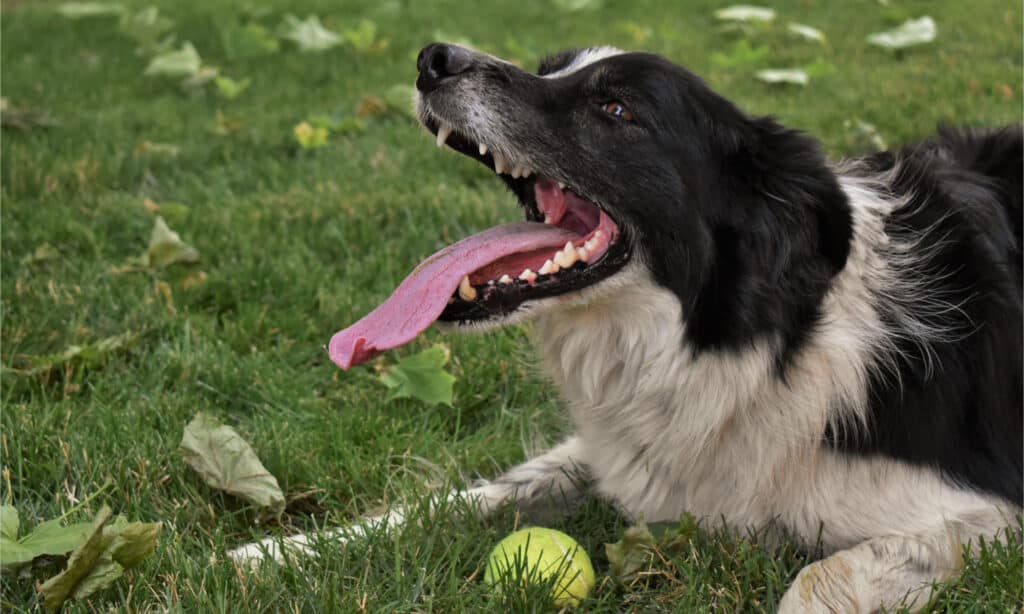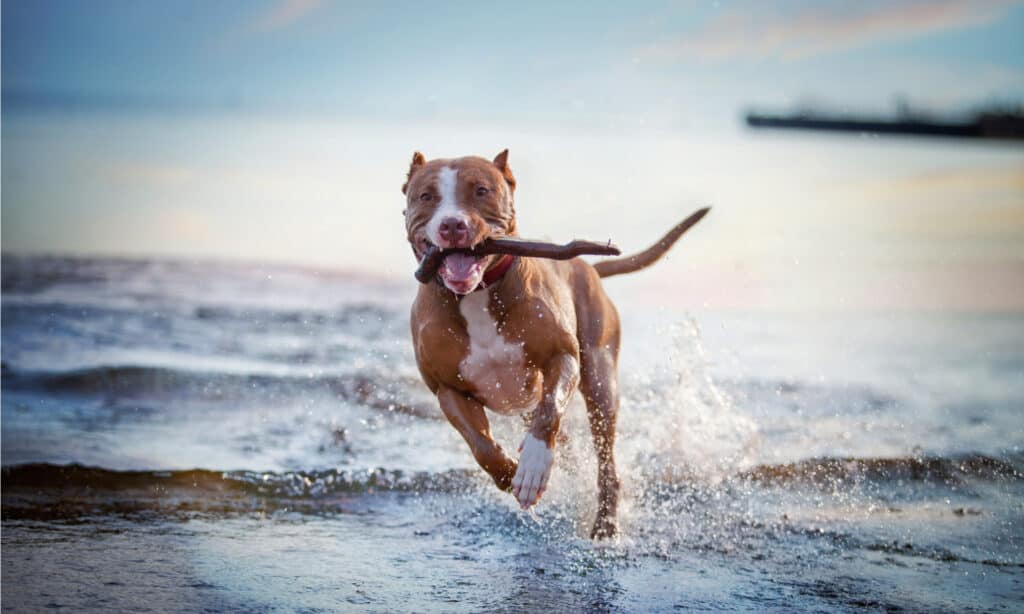Dogs drink water, we drink water, and everything needs water, but can too much water be bad? Have you recently observed your dog drinking a lot of water? Dog parents frequently notice excessive thirst in their dogs, also known as polydipsia, and you shouldn’t dismiss it. Excessive thirst in dogs can have various causes, some of which can be fatal if treated improperly.
If your dog becomes suddenly thirsty for a day, it typically isn’t a cause for concern. Dogs that get too hot, bored, have recently eaten a particular food, or have recently exercised may drink more. Dogs that are breastfeeding and are active drink more than other dogs.
However, if your dog has started emptying the water bowl and this behavior has persisted for longer than a few days, it’s time for a checkup with your veterinarian. Take a sip of water, and let’s get to the bottom of why your dog is thirsty and when to worry.
Causes of Increased Thirst in Dogs

Dmytro Zinkevych/Shutterstock.com
Psychogenic polydipsia is a rare reason why dogs drink more. It is a behavioral syndrome characterized by excessive thirst as a physical symptom. Primary polydipsia describes excessive water consumption not caused by sickness or psychosis. Bored puppies or breeds that enjoy drinking water may constantly or sporadically tank up on water. It can be challenging for your vet to sort things out. In this section, you’ll learn about possible causes for your dog’s increased thirst.
UTI in Older dogs
Because elderly pets have decreased bladder control as they age, urinary tract infections (UTIs) are frequent in these animals. Bacteria cause UTIs, and some pets are more susceptible to them than others. In general, urinary tract infections, or UTIs, are a range of infections that can affect the kidneys, urethra, and bladder. However, bladder illness, including bladder stones, is a form of UTI.
Excessive urine, which happens when your dog drinks more water, is the most typical sign of a UTI. Other symptoms include having trouble peeing or urinating very little, even after drinking extra water. Additionally, it’s helpful to look for any evidence of infection in the urine, such as blood, cloudiness, or an unpleasant odor. While incontinence is common in elderly dogs, it can also signify a urinary tract condition.
Diabetes Mellitus
Pets now more frequently have diabetes mellitus, which needs regular monitoring and treatment. Diabetes is a disease that affects people and animals when the body cannot create or use its insulin. Dog symptoms include increased urination and thirst, weight growth or loss, and changes in appetite.
Getting medical assistance is crucial because diabetes can cause several significant medical disorders in older dogs. If your elderly pet is found to have diabetes, your vet will recommend a treatment plan. The plan might involve insulin injections, dietary adjustments, and exercise regimens. Although managing diabetes in dogs is complicated, it may be done successfully with the proper medical attention for your older dog.
Kidney Health
In older pets, excessive drinking is another sign of kidney illness. Acute renal failure, which is the abrupt failure of the kidneys brought on by ingesting a toxin or trauma, can occur in pets. Other kidney conditions are chronic, can progress gradually, and may be more challenging to detect.
Chronic kidney disease in elderly dogs is inherited and brought on by underlying medical conditions such as infection, kidney stones, cancer, and dental disease. Your vet will examine your pup and run several tests if you think they may have kidney illness. If your pet has the condition, your doctor will recommend a course of treatment. Part of that treatment could include ensuring your dog is taken outside frequently to relieve himself.
Cushing’s Disease
When a pet’s body overproduces the hormone cortisol, Cushing’s disease develops. However, it happens most frequently in middle-aged and elderly canines. Lethargy, heavy panting, recurrent skin infections, an enlarged abdomen, increased thirst, and increased urine and appetite are all signs of Cushing’s disease.
Your veterinarian must run blood tests and even an ultrasound on your dog if they suspect Cushing’s disease. This will help find the cause of excessive thirst or other symptoms. Medication is typically used as a treatment and is necessary for your dog’s health and quality of life.
Medication Side Effects
Anti-inflammatory drugs like prednisone can treat asthma, inflammatory bowel disease, and allergies in dogs, among other things. Some medicines for heart failure, like furosemide, make you pee more and thirstier to make up for it.
Some side effects of seizure medicines, like phenobarbital, include a lot of thirst, urination, and hunger. If you think medication is why your dog drinks more water, you can always ask a vet how to treat the symptoms. A vet can switch the medication or tell you how to treat the symptoms.
Dehydration

Diane Isabel/Shutterstock.com
Dehydration is the most straightforward explanation for why your pet would be drinking more water than usual. When dogs lose fluids and take in less, they get dehydrated. Dogs use panting to control their body temperature. Due to their body losing water as a result of evaporation, they must drink more water as a result.
Dehydration can result from hot, dry weather, strenuous exercise, and other factors. It makes sense that your pet would need to cool off during the summer or in warmer climates. Your pet will become thirsty and drink more water if it pants excessively. Nevertheless, if your pet consumes a lot of water regardless of the weather, they may exhibit symptoms of the diseases described above and need to see a doctor.
How Is Increased Thirst Managed?
Each of these illnesses is complicated and needs a veterinarian’s correct diagnosis and care. A skin turgor test is one of the procedures you may anticipate the vet performing while you’re there. A skin turgor test determines how quickly the skin returns to its usual position.
The back of the animal is a typical location for this test. The inner gums will be examined, and you may also anticipate general inquiries regarding your pet’s drinking and toileting habits. Some blood work will be done to check for blood sugar levels and other causes. Treating increased thirst will be done by finding the cause and setting up treatment.
What Are the Risks of Too Much Water?

dezy/Shutterstock.com
The electrolytes in the dog’s body are upset when too much water is taken in a short period, which can affect brain function, particularly if the dog isn’t peeing or vomiting up any of the water. Drinking too much water can cause death, heart failure, and brain damage. Although water poisoning is fortunately rare, it’s still necessary to be aware of the risk. Dogs who overhydrate during swimming or after playing or exercising are more likely to experience these problems.
Water Intoxication and Treatment
Lack of coordination, lethargy, bloating, vomiting, dilated pupils, glazed eyes, and excessive salivation are water intoxication in dogs. Breathing difficulties, collapsing, losing consciousness, and seizures are examples of advanced symptoms. Most dogs need about one ounce of fluid for every pound of body weight daily.
This means a 10-pound dog needs about 10 ounces of clean water. Dogs that are very active or are nursing may need more, and puppies usually need more water than adult dogs. Time is crucial since water intoxication in dogs may develop so quickly.
Get your dog to the vet for bloodwork if they display any of these signs. The presence of low electrolyte levels will demonstrate the problem. Electrolyte replacement fluids and occasionally a diuretic are part of the treatment for water intoxication. Dog owners should practice water safety when the weather warms up.
Conclusion
Ensuring your dog drinks their recommended water every day can avoid adverse effects. Remembering how much they need can help you notice if they aren’t drinking their recommended amounts. As a pup owner, you should know how much water your dog drinks.
Learn the signs of water intoxication and keep an eye on your dog’s appearance and behavior while he’s having fun in the water. If your dog drinks too little or too much water and it doesn’t resolve in a day or two, they should see a vet. While it’s unlikely to be life-threatening, there is a chance if you find this post helpful for your dog, share it with other dog owners so they can be aware of the risks.
Up Next:
- Can Dogs Drink Orange Juice Safely?
- Types of Water Dog Breeds
- The 5 Best Dog Water Fountains, We Checked
The post Why Does My Dog Drink so Much Water? appeared first on AZ Animals.
from Animal News, Facts, Rankings, and More! - AZ Animals https://ift.tt/idxWkw3